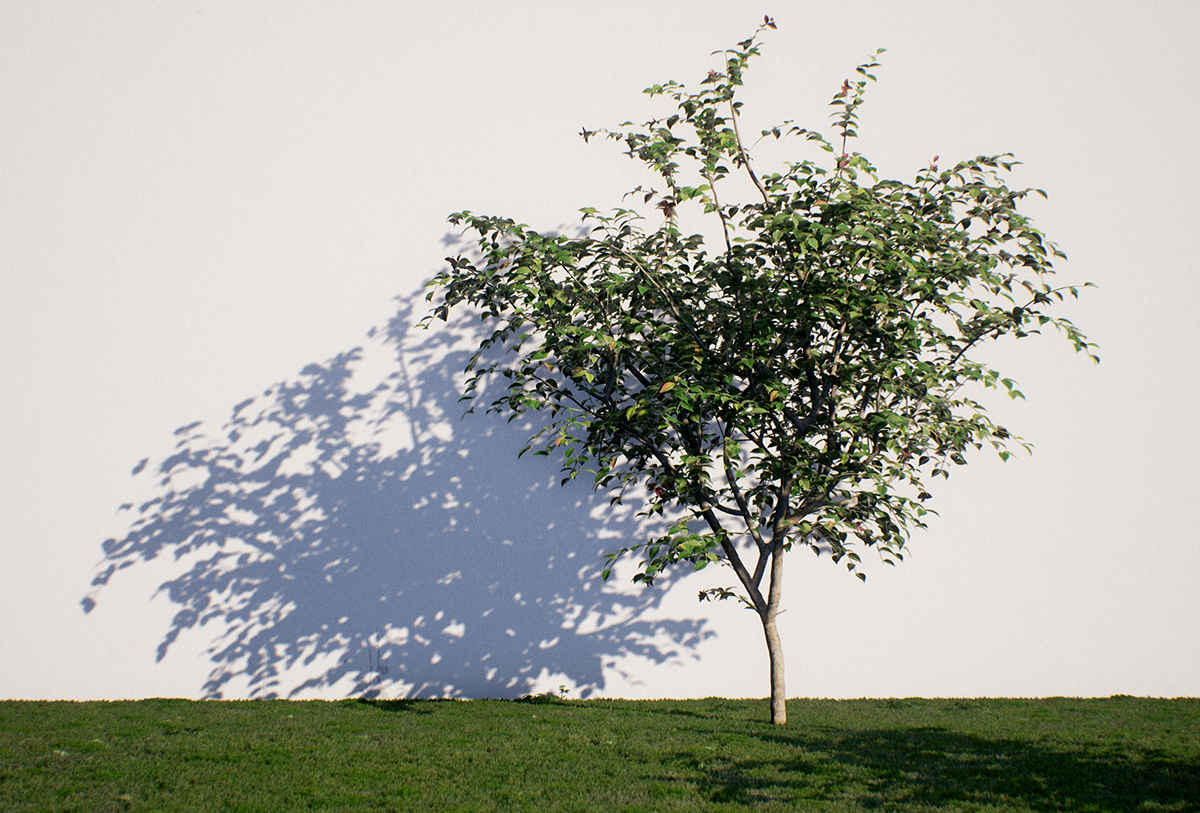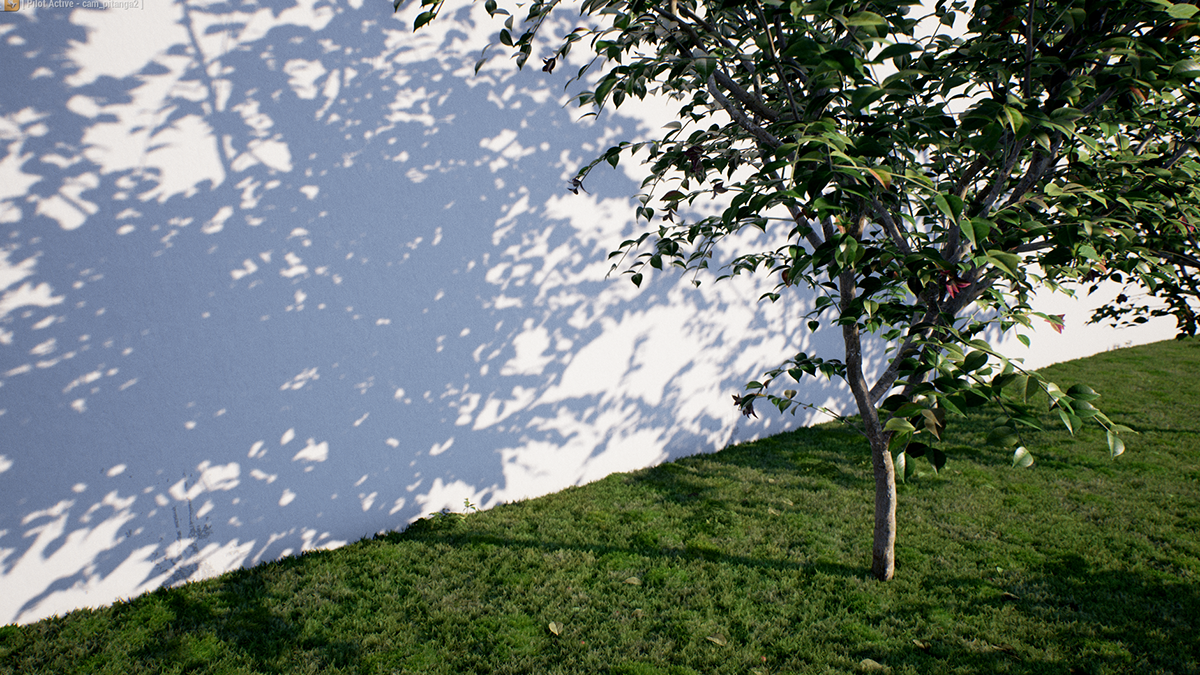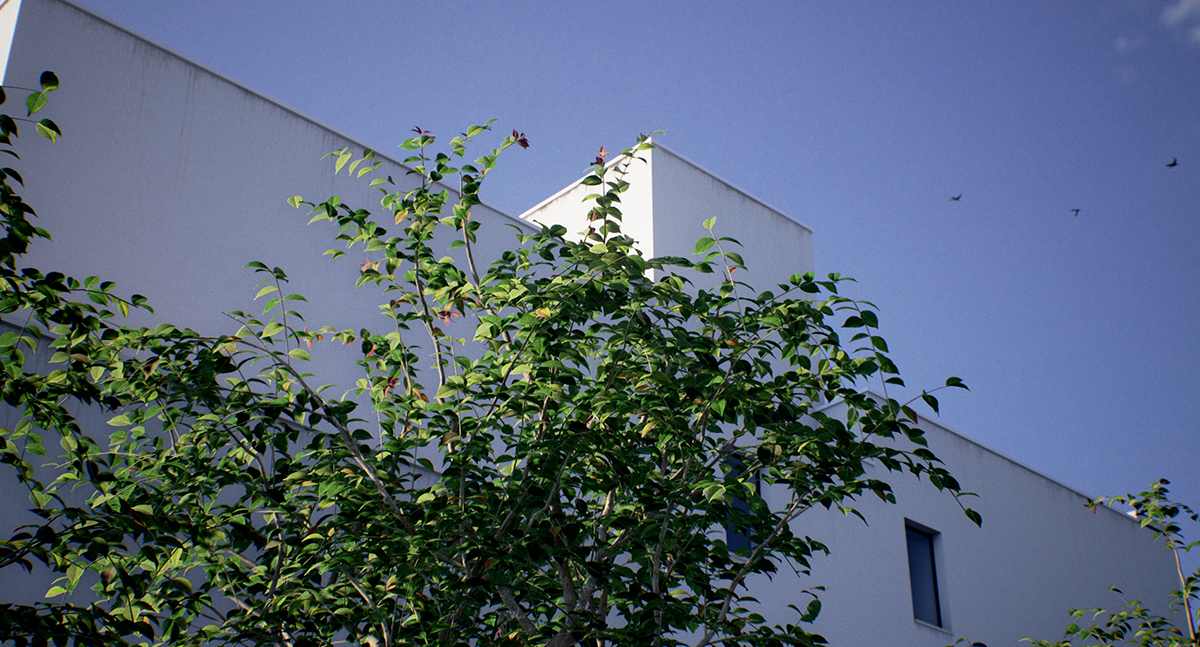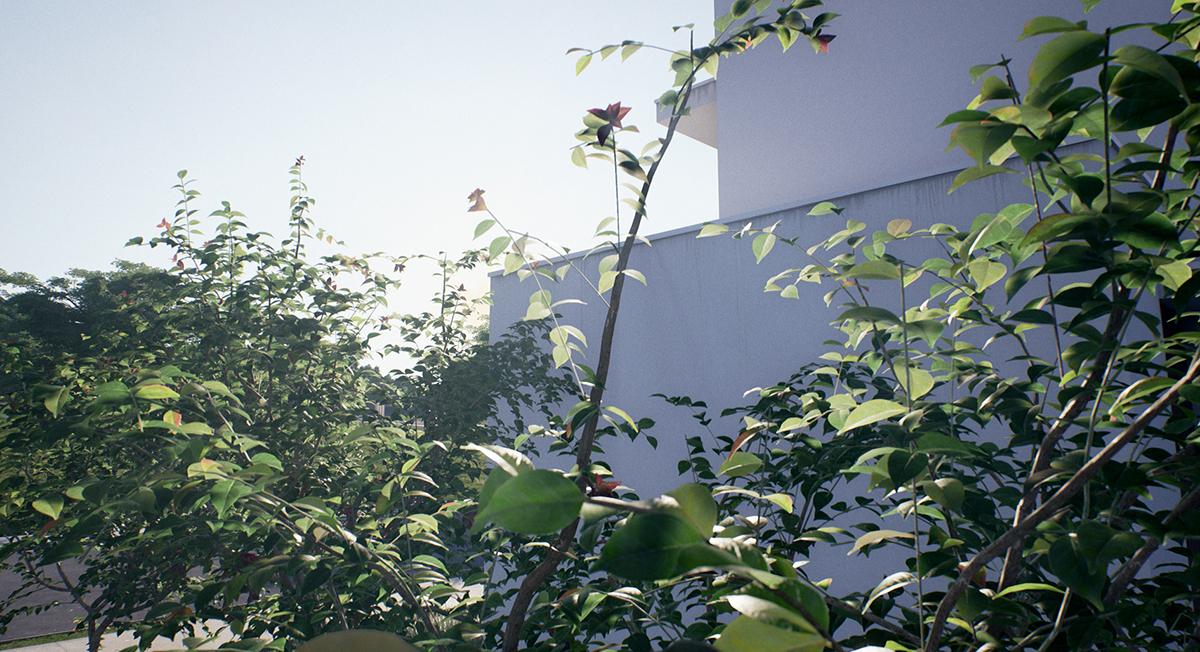A 3D model of an Eugenia uniflora tree for Unreal Engine 4. It's also called Pitangueira in Brazil


I created this tree to compose the environment of my archviz projects in Unreal Engine 4

There are five leaf textures in this model. Four green tones are distributed along the branches. The red tone appears near the end of some branches, the younger leaves.
I took some photos of a real Pitangueira tree in my backyard to use as reference. The leaves and trunk textures are also based on photos worked on Photoshop. With ShaderMap2 I could create some normal and specular maps too.

To give the leaves some depth, I created a "border map". It's an alpha texture that represents the leaf stroke. With that map I can control de brightness of the leaves borders. Make the borders brighter than the rest of the leaf and you'll create a "thickness" illusion.
The 3D model itself was created in SpeedTree - a parametric software to create 3D vegetation. When I was happy enough with the tree's shape I exported it to Unreal Engine 4 and worked on the materials.

The grass and background trees are also created with SpeedTree and Photoshop (for the textures). Real looking grass is a real challenge in game engines, because they usually requires a large amount of geometry to properly reproduce the blades. Large amounts of geometry in a real-time engine means bad performance.
Unreal Engine 4 is a game engine. It means the images above are generated in real-time and it's possible to interact with them. That's the best part of making architectural visualizations in a game engine: you can actually interact with it.




